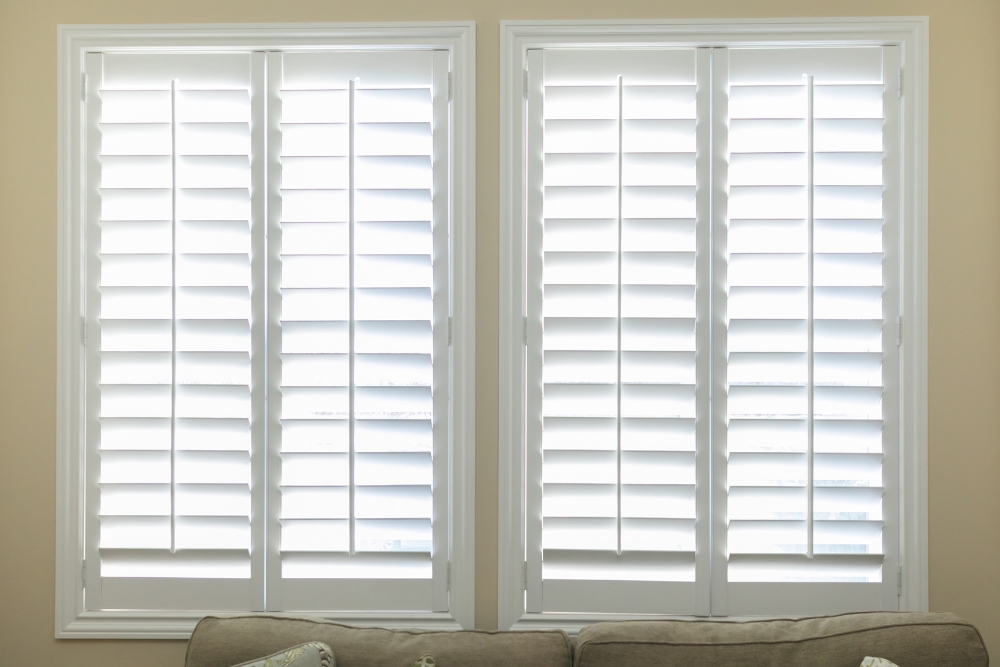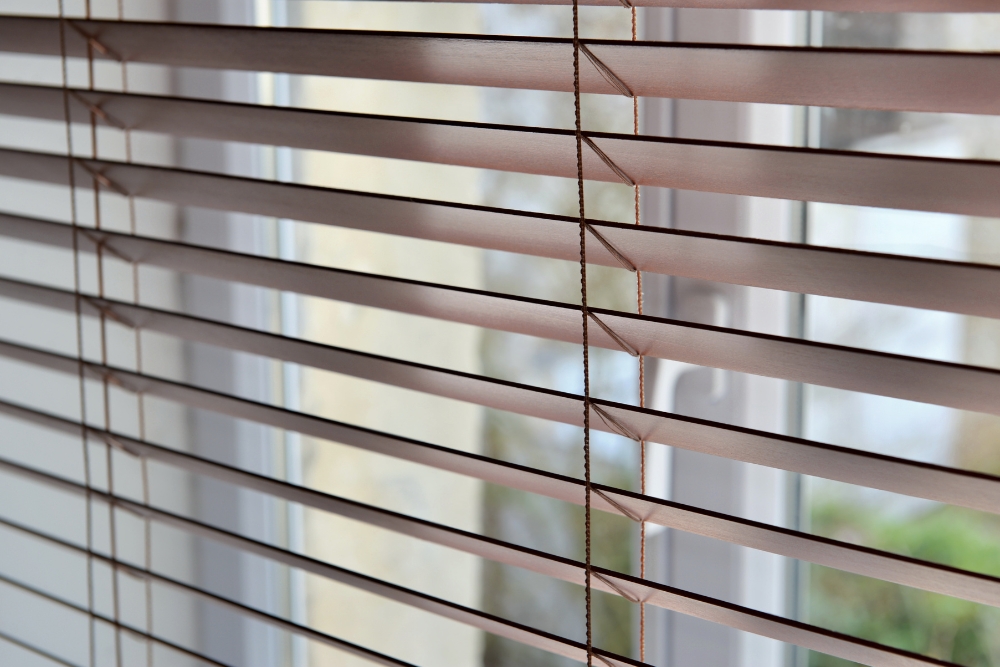Selecting the perfect window accessories can make you scratch your head, right? Just like plenty of others, we’ve tossed up between snazzy looks and sheer practicality. It’s a classic Aussie conundrum! Now, shutters have been adding charm to our homes since the early settler days.
Our yarn will take you through these cultural tales spun around shutters and screens, plus how they spruce up your digs. Stick around as we delve into designs that not only nod to tradition but also ooze contemporary class!
Key Takeaways
- Shutters and screens have transformed from basic protection to stylishly reflecting personal taste and cultural heritage, enhancing homes with traditional and modern designs.
- Using locally inspired styles and materials for shutters can boost a sense of community belonging while preserving the area’s history.
- Customisable window treatments like plantation shutters provide both aesthetic appeal and practical benefits such as improved energy efficiency and simplified maintenance.
- Integrating biophilic design principles by incorporating natural elements into living spaces can improve well-being and strengthen the connection to nature.
- Exploring design resources like the Central Melbourne Design Guide inspires the use of regional architectural influences in creating comfortable, energy-efficient homes.
The Evolution of Dressing Windows
From practical to ornamental, the history of shutters, shades, and blinds has evolved. The simplicity of 18th and 19th-century window treatments laid the foundation for the cultural significance and design elements we see today.
From practical to ornamental
We’ve seen shutters transform from simple functional tools to intricate decorative elements. In the past, they served the sole purpose of protecting homes from harsh weather and intruders.
Now, we admire them for adding charm and character to our spaces. Sophisticated designs turn windows into focal points of interior design, reflecting personal style and architectural trends.
Craftsmen shape shutters in various materials and styles to suit any era or region, creating a bridge between tradition and innovation. They not only enhance curb appeal but also contribute to preserving cultural heritage in our communities.

As we delve deeper into the history of these timeless features, let’s appreciate their evolution from mere necessities to prized ornaments that capture attention and tell stories through their aesthetic appeal.
Heading next into ‘The History of Shutters, Shades, and Blinds’, we’ll explore how these items have developed over time.
The history of shutters, shades, and blinds
Shutters, shades, and blinds have a rich history rooted in both practicality and aesthetics. Historical records show that these window coverings were initially used for protection from the elements, providing privacy and regulating light within buildings.
Over time, the design of shutters, shades, and blinds has evolved to incorporate decorative elements, with artisans using various materials to create intricate designs. The simplicity of 18th and 19th-century window treatments reflects a period where craftsmanship met functionality.
In addition to their functional role as window dressings, shutters, shades, and blinds also carry significant cultural heritage value. These coverings often reflect local culture and traditions through their design styles and materials used.
Simplicity of 18th and 19th-century window treatments
Simple yet elegant, the window treatments of the 18th and 19th centuries embodied a timeless charm. Soft fabrics like cotton and linen were commonly used for curtains, providing a lightweight and breezy feel to interiors.
The focus was on functionality and practicality with minimal embellishments, allowing natural light to flow into living spaces while maintaining privacy. Shutters made from wood or metal louvres were also popular during this era, offering a clean and uncluttered look that complemented the architectural style of the time.
Crafted with precision and attention to detail, these window treatments are seamlessly integrated with the overall design aesthetic of homes and commercial buildings. A restrained colour palette often consisting of muted tones such as whites, creams, and earthy hues further enhanced the simplicity of these window dressings, creating an atmosphere of understated sophistication within each space.
The Cultural Significance of Shutters and Screens
Understanding the context of a place in design allows for shutters and screens to reflect the local culture and heritage, bringing a sense of authenticity to your space. Achieving harmony and balance between light and privacy through these cultural elements adds depth and character to your home or office design.
Reflecting the local culture and heritage
Incorporating traditional craftsmanship in the design of shutters and screens adds a unique touch that reflects the local culture and heritage. Using building materials indigenous to the region not only celebrates the area’s history but also promotes heritage conservation.
This cultural symbolism creates a sense of belonging and connection to the community, enhancing the overall architectural design with a distinct regional identity.
Embracing awnings or other window treatments that have been historically used in the local area can infuse your space with an authentic charm while contributing to urban design that respects and preserves historical preservation.
Understanding the context of a place in design
Reflecting the local culture and heritage is vital when designing a space. Understanding the context of a place in design allows us to create environments that resonate with the history, traditions, and identity of a location.
By incorporating elements such as traditional building materials, architectural styles, and local artistry into our designs, we can ensure that spaces reflect the unique essence of their surroundings.
Furthermore, considering the cultural significance of shutters and screens in design helps to maintain harmony between indoor and outdoor spaces while respecting privacy needs. This approach fosters an overall sense of balance and coherence within a living or working environment.
Harmony and balance of light and privacy
To achieve harmony and balance of light and privacy in your living or workspace, consider using adjustable shutters or screens. They allow you to control the amount of natural light entering the room while maintaining a level of privacy that suits your needs.
By adjusting the louvres or panels, you can create just the right ambience for any time of day or activity, whether it’s bright and airy during the day or cosy and intimate in the evening.
Customisable options also provide flexibility to adapt to changing seasons, ensuring a comfortable and inviting environment year-round.
Incorporating shutters and screens into your interior design not only enhances aesthetics but also supports energy efficiency by moderating indoor temperature through effective light management.

Adding Value with Plantation Shutters
Plantation shutters add timeless elegance and value to your home, with customisation options for a unique look. Learn more about how these window treatments can enhance the design of your space.
Timeless and elegant design
Plantation shutters offer a timeless and elegant design that complements various architectural styles. Their classic appeal adds sophistication to any home or office decor, creating a warm and inviting atmosphere.
The versatility of plantation shutters allows for seamless integration with different interior design themes, making them an enduring choice for enhancing the aesthetic appeal of any space.
Infill development can be greatly enhanced by the addition of these shutters, elevating the overall architecture while optimising energy performance-oriented goals.
Customisation for a unique look
To add a personal touch and create a unique look, consider customising your shutters and screens. Tailoring the design to match your home or office decor brings a sense of individuality and style.
By choosing from various colours, materials, and finishes, you can curate a cohesive appearance that complements the overall aesthetic of your space.
Incorporating custom elements allows you to infuse personality into your surroundings while ensuring that your window treatments align with the cultural significance of design. Personalised details not only enhance the visual appeal but also reflect your taste and preferences, making it an integral part of energy performance-oriented optimisation for your property’s interior ambience.
Energy efficiency and easy maintenance
When considering shutters and screens for your home or office, it’s important to note their energy efficiency and easy maintenance benefits. Here are some key points to consider:
- Plantation shutters are designed to enhance energy performance by providing insulation, helping to regulate indoor temperatures, and reducing the need for excessive heating or cooling.
- Shutters also offer the advantage of easy maintenance with their durable materials, such as vinyl or aluminium, requiring simple cleaning and occasional upkeep.
- By opting for quality materials and professional installation, you can maximise the energy-saving potential of shutters and screens while minimising maintenance tasks.
Enhancing the Design of Your Home
Incorporate rich and inviting building materials to create an atmosphere of warmth. Consider biophilic design principles for a connection to nature within indoor spaces. Explore the Central Melbourne Design Guide for inspiration on how to enhance your home’s aesthetic appeal.
Use of rich and inviting building materials
Our homes are a reflection of our style and aspirations. By incorporating rich and inviting building materials such as solid wood, stone, or wrought iron into our interior design, we can create a warm and welcoming atmosphere that embodies elegance and sophistication.
These materials not only add visual appeal but also provide durability, ensuring longevity in your home decor. The use of these luxurious building materials can elevate the overall aesthetic of your space while creating an inviting environment for both residents and guests.
Integrating high-quality building materials into our living spaces also contributes to energy performance-oriented optimisation and aligns with the principles of biophilic design. This harmonious integration seamlessly combines functionality with aesthetics, enhancing the overall ambience while embracing sustainable practices.
Incorporating biophilic design principles
Incorporating biophilic design principles into your home or office space can have a positive impact on your well-being and productivity. Here are some ways to seamlessly integrate these principles into your design:
- Utilise natural materials such as wood, stone, or bamboo for furniture and decor to create a connection with the outdoors.
- Introduce greenery through potted plants, living walls, or indoor gardens to enhance air quality and bring nature indoors.
- Maximise natural light by strategically placing windows and skylights, reducing reliance on artificial lighting and creating a sense of openness.
- Incorporate water features like fountains or indoor ponds to evoke tranquillity and mimic natural elements within the space.
- Create spaces that encourage interaction with nature, such as outdoor seating areas, rooftop gardens, or balconies for relaxation and contemplation.
- Design flexible layouts that allow for seamless transitions between indoor and outdoor spaces, promoting a sense of unity with nature.
Inspiration from Central Melbourne Design Guide
The Central Melbourne Design Guide offers valuable inspiration for incorporating cultural significance into your home or office design. The guide showcases a diverse array of architectural styles, materials, and design elements that reflect the rich heritage and culture of Melbourne.
By drawing inspiration from the guide’s emphasis on energy performance-oriented optimisation, you can enhance the functionality and sustainability of your space while embracing local design influences.
While exploring the Central Melbourne Design Guide, we can glean insights into leveraging building materials to create inviting spaces that harmonise with nature. Additionally, by incorporating biophilic design principles highlighted in the guide, you can infuse your interior with a sense of connection to the natural environment while achieving energy-efficient solutions for your shutters and screens.
Explore More About Shutters and Screens
In conclusion, shutters and screens play a vital role in reflecting the cultural significance of a place in design. They add value to homes and offices through their timeless and elegant designs.
Enhancing the overall aesthetic appeal, they are also energy-efficient and easy to maintain. Embracing the local culture and heritage, these window treatments contribute to creating harmony, balance, and privacy while incorporating rich building materials for an inviting atmosphere.
With their customisation options and biophilic design principles, shutters and screens truly elevate the overall design of any space.

